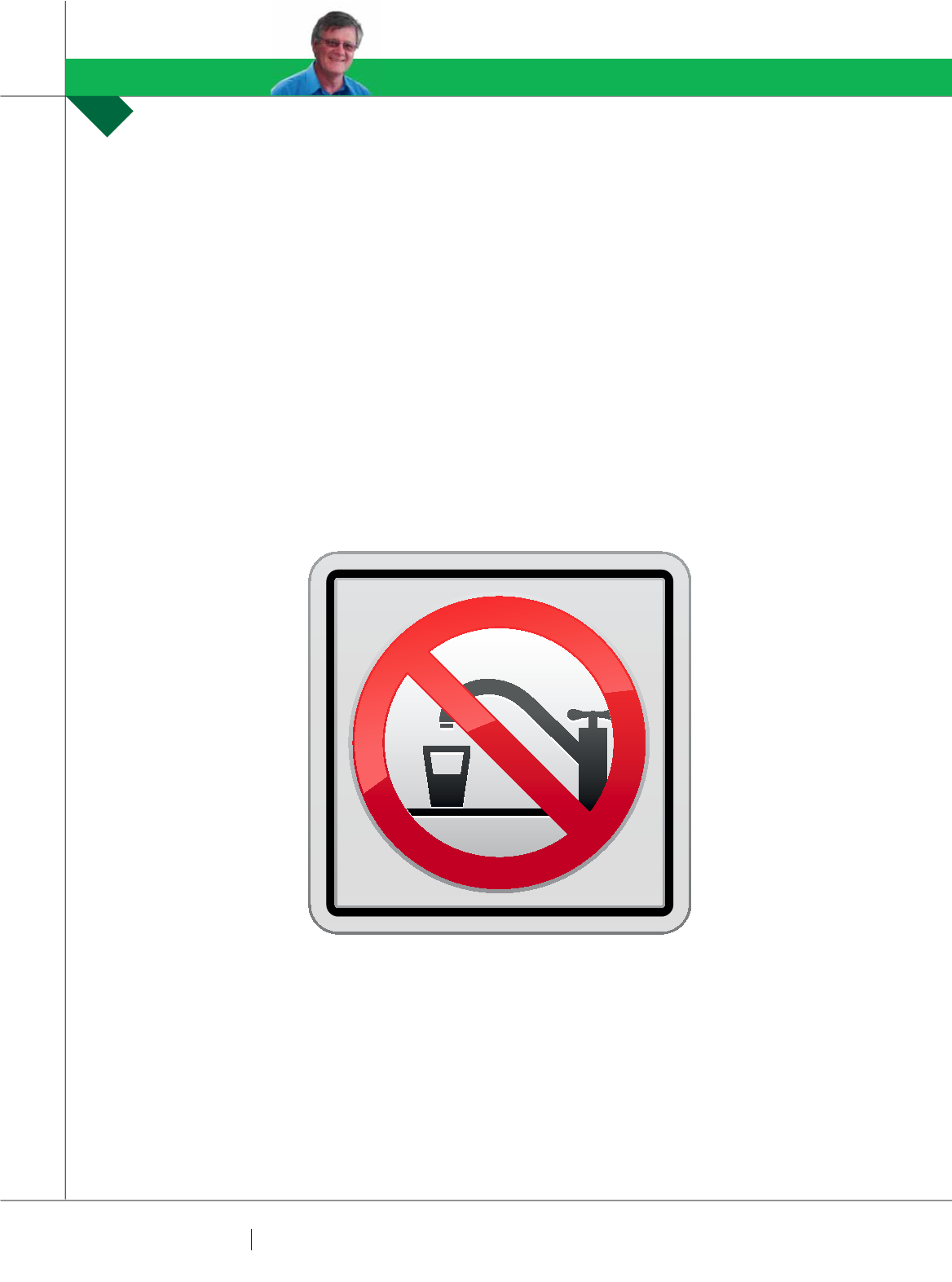

8 6
PLUMBING CONNECTION
AUTUMN 2015
CONTAINMENT
VS.
COMPLETE
INTERNAL PROTECTION.
A
s people’s understanding of the causes and potential
outcomes related to a backflow event grow, we again
see a strengthening of backflow prevention programs
and policies among water providers.
The overriding emphasis is on containment, as the
underlying philosophy is one to protect the asset, i.e. the
water in the main. When you consider the cost of collecting
the water, treating it and then distributing it to the populace,
the reason for a strong containment policy becomes
apparent. It is a double edged
sword. One, to protect the
asset and two, to protect the
consumers from potentially
being exposed to polluted
drinking water.
Water suppliers in most
cases cannot monitor what
type of protection is used
within premises as their
jurisdiction mostly ends at
the water meter. They have
protected the asset and the
water in the mains; it is now up
to the owner of the premises to
manage the risks within.
If I cast back to when I learnt
about backflow prevention
and ways to manage cross
connections, it was drummed
into me that a complete
cross connection control
program consisted of all three elements: containment, zone
protection and individual protection.
To clarify exactly what these terms mean:
Containment –
Backflow prevention provided at the
property boundary to protect the authority’s water supply
from contamination.
Zone protection –
Backflow prevention provided at the
connection to specific sections of the water supply system
within a building or premises.
Individual protection –
Backflow prevention provided at
individual fixtures.
It is the mix of these three components that will provide
complete protection and we see it used every day in places
like hospitals. But hospitals tend to be a minority due to the
perceived higher risk to the water supply.
Why are hospitals a minority? Shouldn’t all water systems
be treated equally? Well in a perfect world, yes, but let’s
examine the real world.
1. Containment is regulated and managed by the water
provider. Generally as part of the Plumbing Code, or the
local plumbing regulations,
backflow protection is
required to protect the
water supply by way of
boundary protection. The
water provider maintains
a register of when and
where and what type of
containment protection
has been installed and
they develop internal
policies and procedures
so that the protection
is inspected and tested
at regular intervals. The
policy will generally identify
which party is responsible
for the inspection and
testing (usually the
premises’ owner) and
attach penalties for non-
compliance.
2. Once you get inside the premises boundary, things
become muddied. All plumbing, when installed by a
licensed plumber, should comply with the relevant Codes
which call up various Standards which when followed
would ensure the plumbing would be safely protected
from a backflow incident. But as this is now in the private
plumbing system, the water supplier has no jurisdiction
once the water leaves the water meter. So there is
generally little or no inspection to ensure the correct level
of protection is in place.
The water supplier has provided their protection so
that their asset is protected and that water entering
PETER MCLENNAN
OFFERS SOME VALUABLE SUGGESTIONS PERTAINING TO THE QUESTION, WHAT CAN WE DO TO
PROTECT ALL THE DRINKING WATER?
BACKFLOW PREVENTION
PETER MCLENNAN
















